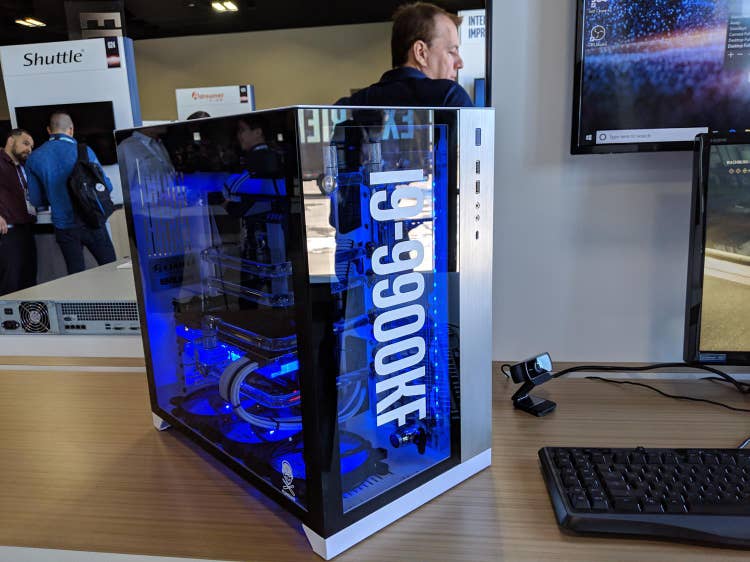Intel F-Series Processor Sales Are Soaring In System Builder Channel
'I think it was a good product to introduce, a good product to help us smooth over the bubble in the market we're having right now,' one distribution executive tells CRN of Intel's strategy to sell processors without integrated graphics as a way to improve supply.

Sales of Intel's F-series client processors – introduced this year as "discrete ready" parts without integrated graphics to help alleviate the CPU shortage — now accounts for more than 10 percent of total desktop CPUs sold to system builders through the company's U.S. authorized distributors, said a top Intel channel executive.
"They are absolutely great parts and a critical part of our strategy to relieve some of the tension," Todd Garrigues, director of partner sales programs at Intel, said of the Core processors that have an "F" suffix, which now span eight SKUs, from the high-end Core i9-9900KF to the entry-level Core i3-9100F.
[Related: Intel’s Jason Kimrey: Windows 7 End-Of-Life Opportunity Is ‘Unprecedented’]
Kent Tibbils, vice president of ASI, a Fremont, Calif.-based authorized Intel distributor, said the chipmaker's F-series processors accounted for 16 percent of total desktop CPUs for ASI in the second quarter, which he called a "pretty fast adoption rate."
"I think it was a good product to introduce, a good product to help us smooth over the bubble in the market we're having right now," Tibbils said.
Incentives Help Address Pricing Issues
What helped accelerate adoption, according to Tibbils, were a variety of incentives Intel introduced to help address the price disparity between F-series processors and their counterparts that come with integrated graphics. Because the F-series processors have the same recommended pricing as the regular CPUs with integrated graphics, it meant that, without any kind of discount, systems could cost more in cases where a discrete graphics card wasn't originally needed.
"If you're trying to deploy a solution into a general-purpose PC environment where integrated graphics were all you needed, I think that overall [bill of materials] cost becomes trickier," he said, adding that it could especially have an impact on education organizations and enterprises.
After Intel initially faced questions over the F-series pricing strategy in the first quarter, the company has stepped in with “pricing adjustments” that have made the processors more attractive, said Tibbils.
According to Intel, the company's partner incentives for the F-series processors include points promotions for Intel Technology Provider partners, software and game bundles, graphics card bundles and other incentives offered through Intel's authorized distributors.
"That is absolutely part of the go-to-market for those products," Garrigues said. "So today through distribution, we are working with a lot of the graphic card vendors on promotions and working with the distributors on some other incentives as well."
In the case of graphics card bundles, Intel recently ran a promotion where partners who purchased F-series processors with select graphics cards would receive a discount from the graphics card vendor.
One of the goals of the F-series incentives, Garrigues said, is to address the added costs of the required discrete graphics card and bring systems closer to price parity with PCs running Intel's regular CPUs.
"That is absolutely our goal, to help enable them, to still be able to get those price points," he said.
Tibbils said one added benefit of the incentives is they essentially amount to cost savings for partners who are selling high-end systems that were already planned to include graphics cards.
F-Series Has A Future Beyond The Shortage
While the F-series processors were originally introduced to improve Intel's CPU shortage, the company's supply issues are starting to improve. Gartner's latest PC report said there are "signs that the Intel CPU shortage is easing," and Intel U.S. channel chief Jason Kimrey told CRN in a recent interview that the company expects the issue to be largely resolved by the fourth quarter.
"It will be interesting to see where Intel takes the roadmap for the F-series in the future," Tibbils said.
But for Kimrey, there is no question: the F-series is here for the long run.
"We are committed to this strategy moving forward," he said, echoing remarks by Intel executive Steve Long. "This particular product has a long lifecycle ahead of it, and it's one that we're committed to because we actually see the benefit of doing it, and our customers have responded well to it."